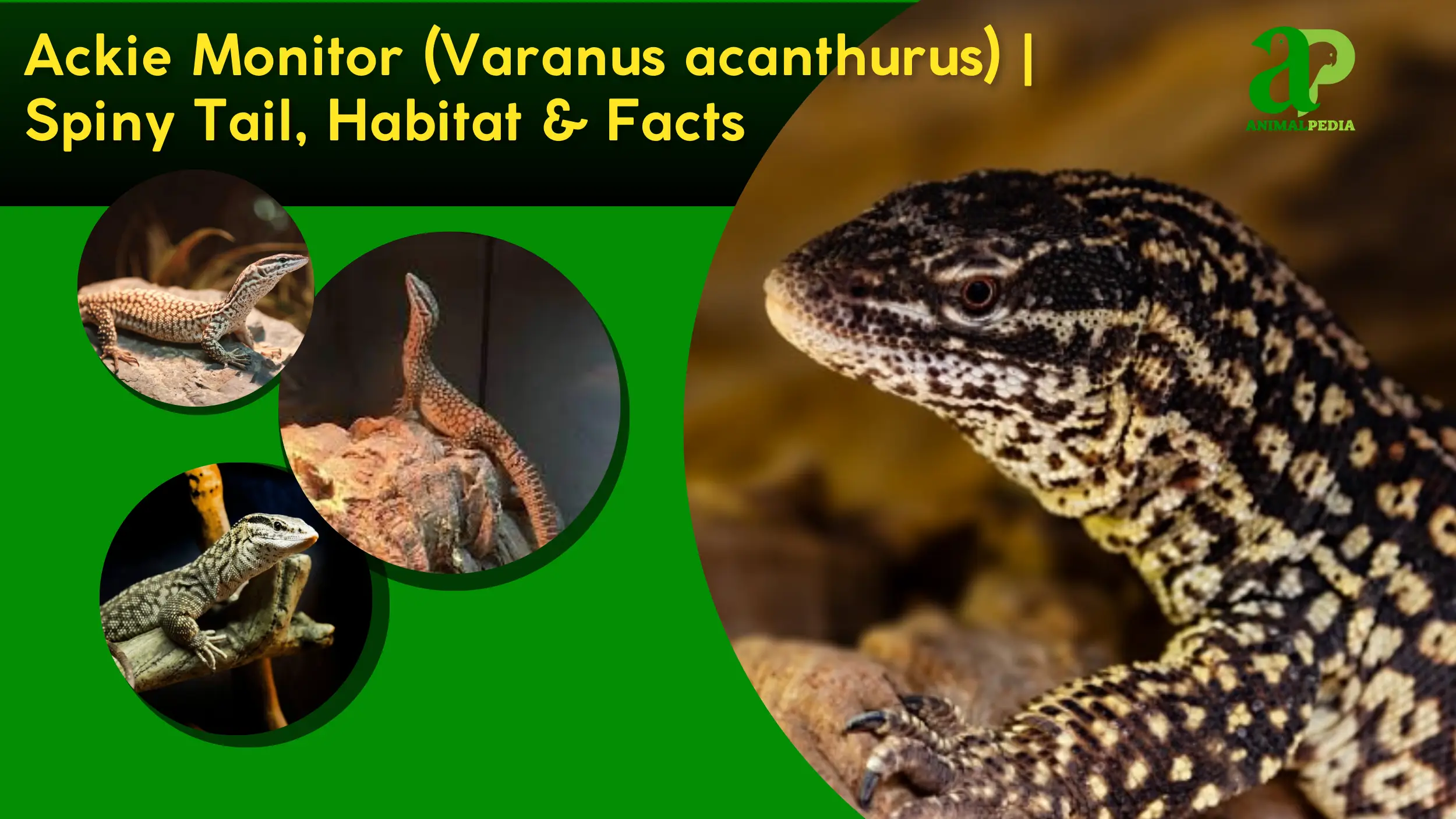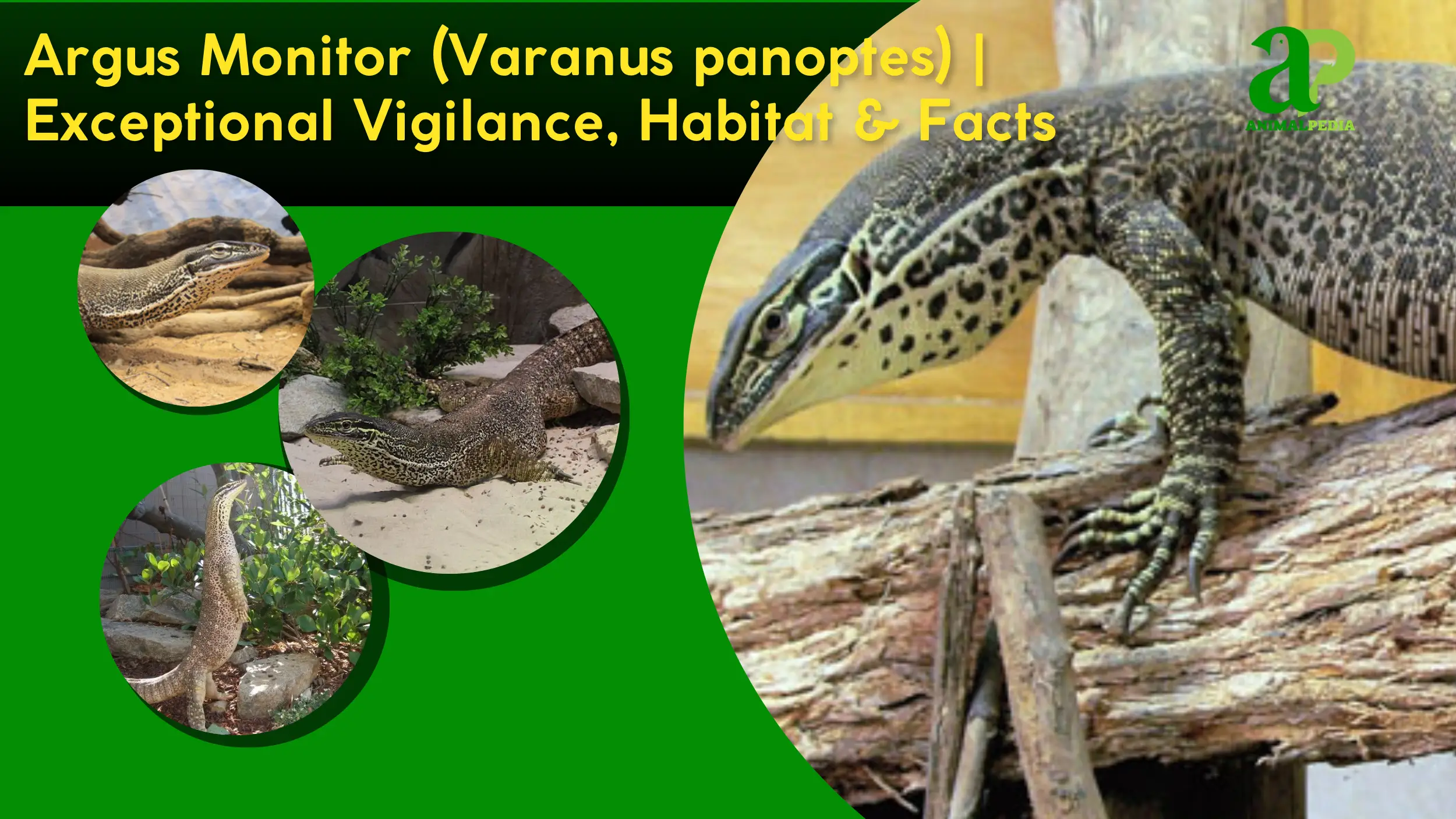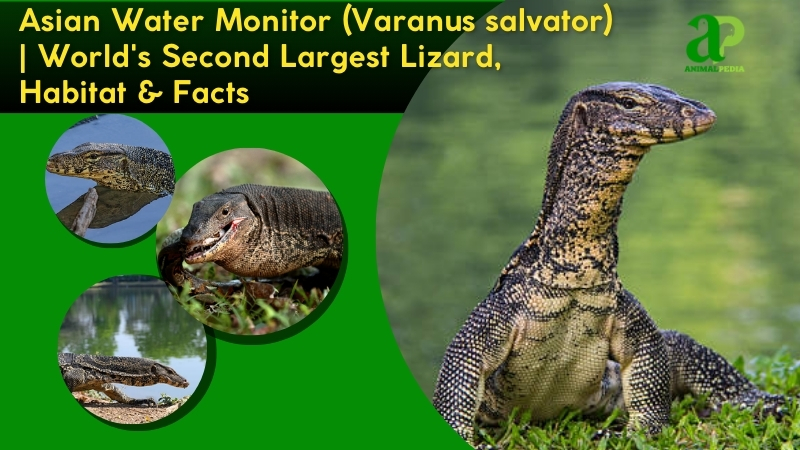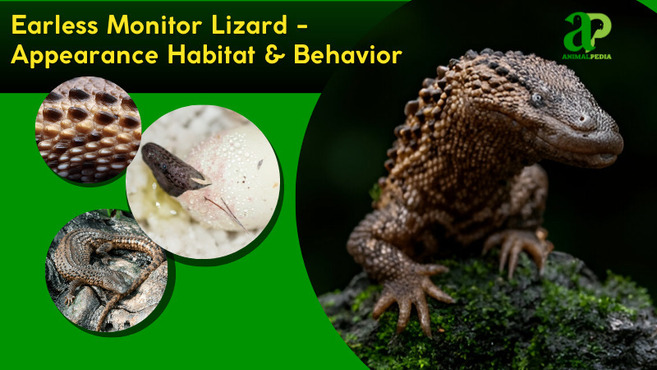Savannah Monitors (Varanus exanthematicus) are medium-sized, terrestrial monitor lizards indigenous to the African savannas (2, 16). These robust reptiles, categorized under the Animalia kingdom, Chordata phylum, Reptilia class, Squamata order, and Varanidae family, typically measure between 41 and 61 inches (105-155 cm) in total length and weigh 2.2 to 15.4 pounds (1-7 kg) (2, 16).
Distributed across sub-Saharan Africa, they thrive in warm climates with moderate humidity, adapting to environments like woodlands and open forests (15). Primarily insectivorous, their diet consists largely of invertebrates such as snails and various insects (15).
These creatures predominantly move by walking and digging, are capable of short climbing and swimming distances, and are active during daylight hours, often aestivating during dry seasons (10, 15). The species currently holds a conservation status of Least Concern on the IUCN Red List, though habitat degradation and overharvesting pose ongoing challenges (8).
This comprehensive guide examines the intricate biology, adaptive physical attributes, specific habitat preferences, and complex behavioral patterns of the Savannah Monitor. Understanding these facets provides insight into their ecological significance and the interactions they have with other species and human populations. This exploration begins by defining the Savannah Monitor, establishing its taxonomic placement, and key biological distinctions.
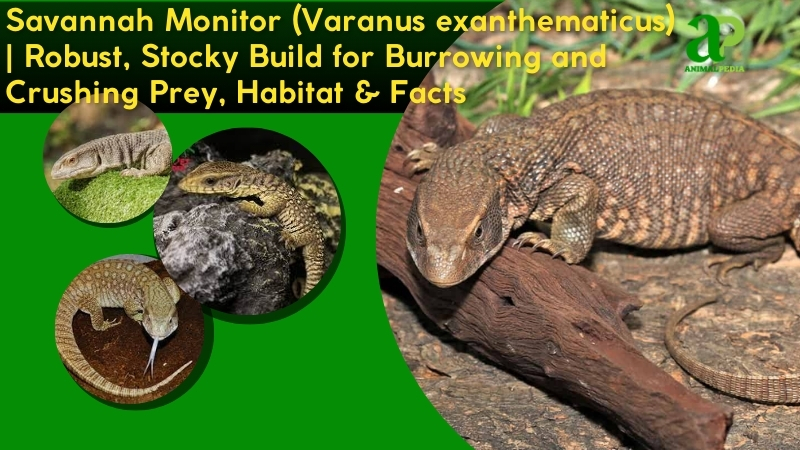
Scientific Classification
| KINGDOM | Animalia |
| PHYLUM | Chordata |
| SUBPHYLUM | Vertebrata |
| CLASS | Reptilia |
| ORDER | Squamata |
| FAMILY | Varanidae |
| GENUS | Varanus |
| SPECIES | Varanus exanthematicus |
Quick Facts
| Size | 41 - 61 inches (3.5 - 5.1 ft) |
| Weight | 2.2 to 15.4 pounds (1-7 kg) |
| Life span | 8 - 13 years |
| Habitat | Savanna/grassland/dry forest |
| Diet | Insects/rodents/snails |
| Social Structure | Solitary/territorial |
| Key Features | Stocky body/strong jaws/short legs |
What is the Savannah Monitor?
The Savannah Monitor (Varanus exanthematicus) is a ground-dwelling lizard indigenous to the African savannas, known for its robust build and specialized predatory behaviors (2, 15). This fascinating animal falls under a precise scientific classification, belonging to the Varanidae family within the Squamata order, establishing it as a vertebrate reptile within the Animalia kingdom (2).
Beyond its scientific designation, the species is frequently recognized by alternative names, including Bosc’s Monitor, especially in European regions, and Steppenwaran in German, both names referencing its native savanna-like habitats or its initial describer (3, 5).
French botanist Louis Augustin Guillaume Bosc first documented this species in 1792, noting the distinct blister-like scales on its neck, which inspired its scientific epithet, exanthematicus (3). These lizards are large, carnivorous reptiles, exhibiting a diet that includes a range of invertebrates, making them important components of their ecosystems (15).
Having established its taxonomic identity and ecological niche, we turn our attention to the Savannah Monitor’s distinctive physical appearance. This will illuminate how its form aids its function in the wild.
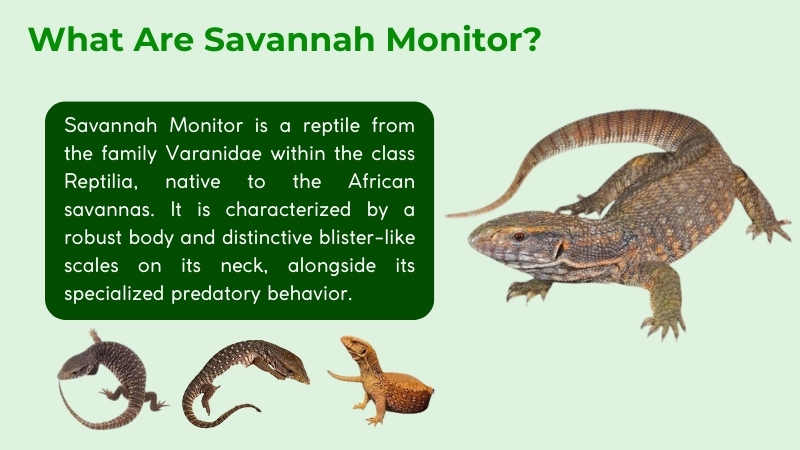
What Does the Savannah Monitor Look Like?
The Savannah Monitor presents a robust, stocky physique, characterized by a thick body, short limbs, and a relatively short neck, an adaptation supporting its terrestrial and burrowing lifestyle (15). Its skin is a mosaic of scaly, tough textures, typically displaying a gray-brown to tan base coloration (15). This base features distinctive rows of yellow or ochre circular spots on its back, providing effective camouflage amidst savanna grasses (15).
The patterns often include dark-edged ocelli, eye-like spots that tend to fade as the monitor matures. The tail displays alternating dark and light bands, contributing to the animal’s overall cryptic appearance. Juveniles typically exhibit a brighter contrast in their patterning compared to adults, whose colors become more subdued with age. The coarse, keeled texture of their skin offers both protection and aids in their extensive burrowing activities (15).
The Savannah Monitor exhibits eight distinct physical characteristics crucial for its survival and interaction within its environment. These features collectively contribute to its specialized adaptations for predation and defense.
- Robust Body Shape: The monitor possesses a stocky and thick body with relatively short limbs, optimizing it for terrestrial locomotion and extensive digging. Its sturdy build allows it to navigate its savanna habitat and create burrows for shelter effectively (15).
- Scaly Skin: Its tough, coarse, and keeled skin serves as a protective armor against environmental hazards and predators. The gray-brown to tan base color with yellow or ochre circular spots provides excellent camouflage, blending seamlessly into dry grasslands (15).
- Wide Conical Head: The head is broad and distinctly conical, featuring a short snout that is specifically adapted for crushing the exoskeletons of its invertebrate prey (15).
- Specialized Dentition: Adults possess 9 to 11 blunt, peg-like teeth per jaw, totaling 38 to 44 teeth, designed to efficiently crush snails and other hard-shelled invertebrates. Juveniles, however, have sharper, recurved teeth, better suited for capturing insects (15).
- Blue Forked Tongue: A prominent blue, forked tongue extends rapidly, playing a critical role in chemoreception, allowing the monitor to detect chemical cues in its environment to locate prey and navigate (15).
- Powerful Limbs: The four short, muscular limbs are equipped with sharp claws, making them highly effective tools for digging burrows and climbing low vegetation (15).
- Tapered Tail: The tail is relatively short, approximately 1 to 1.5 times the length of its body, tapered, and laterally compressed. It features a double dorsal keel, serving multiple functions including balance, defense through whipping, and significant fat storage for periods of scarcity (15).
- Nictitating Membrane: The eyes are protected by a nictitating membrane, a transparent or translucent third eyelid that offers protection during digging, hunting, or aggressive encounters (15).
Sexual dimorphism in Savannah Monitors is subtle but discernible; males typically grow 10 to 20 percent larger than females, possessing broader heads and more pronounced keels along their backs (16). Females, conversely, often exhibit a more slender build.
These size distinctions become apparent as the monitors mature, with juveniles showing minimal differences (16). Considering these distinctive features, an understanding of the Savannah Monitor’s overall size and growth patterns becomes the next step in appreciating its natural history.

How big is a Savannah Monitor?
Adult Savannah Monitors generally achieve a total length between 41 and 61 inches (105-155 cm), with an average weight ranging from 2.2 to 15.4 pounds (1-7 kg) (16, 15). While these figures represent the common range, some historical accounts may overstate maximum sizes (15).
| Characteristic | Male | Female |
| Length | 45-61 inches (114-155 cm) | 41-55 inches (105-140 cm) |
| Weight | 3-15.4 pounds (1.4-7 kg) | 2.2-12 pounds (1-5.4 kg) |
| Record Size | Up to 70 pounds (32 kg) | Up to 40 pounds (18 kg) |
Growth in Savannah Monitors progresses through distinct stages; hatchlings measure 6 to 9 inches (15-23 cm) in length and weigh 0.2 to 0.4 pounds (0.1-0.2 kg) (16). By one year of age, juveniles can reach 20 to 30 inches (51-76 cm) and weigh 1 to 3 pounds (0.5-1.4 kg), attaining reproductive maturity between 2 to 3 years (16).
For context, an adult Savannah Monitor can be as long as a typical golf club or a child’s bicycle. Their impressive size and robust build are perfectly suited to the environments they call home.
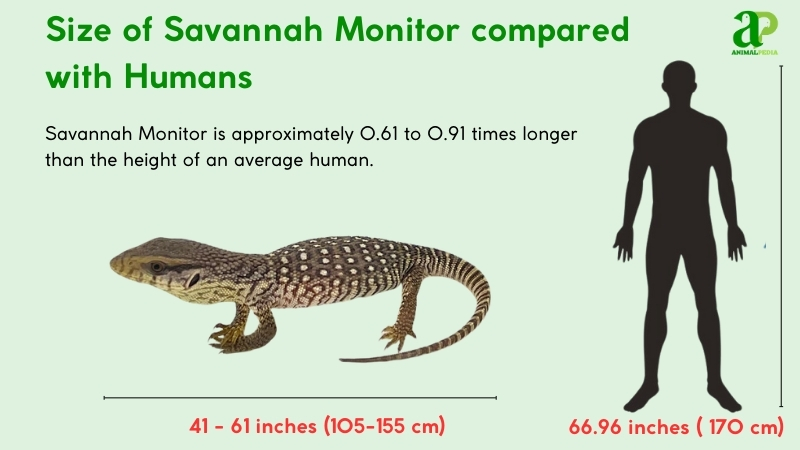
Where does the Savannah Monitor live?
The Savannah Monitor primarily inhabits diverse environments across sub-Saharan Africa, including vast savannas, open woodlands, and rocky terrains (15). This broad geographic distribution spans countries such as Benin, Burkina Faso, Cameroon, Chad, Ghana, Kenya, Mali, Nigeria, Senegal, Sudan, Togo, Uganda, and extends into South Sudan (15). These adaptable lizards avoid dense rainforests and arid true deserts, preferring regions that offer a balance of cover and open spaces for hunting and basking.
Optimal climate conditions for the Savannah Monitor involve warm temperatures ranging from 75 to 95 degrees Fahrenheit (24-35 degrees Celsius) and moderate humidity levels between 40 to 60 percent (15). Their activity patterns are notably influenced by seasonal changes, with breeding occurring primarily during the wet season, while drier periods often trigger aestivation, a state of dormancy (15).
Male Savannah Monitors demonstrate strong territorial behaviors, meticulously marking their areas with scent and defending them through ritualistic wrestling or aggressive displays (15). Understanding where these impressive reptiles reside naturally leads us to explore the intricate ways they interact with their environment through their unique behaviors.
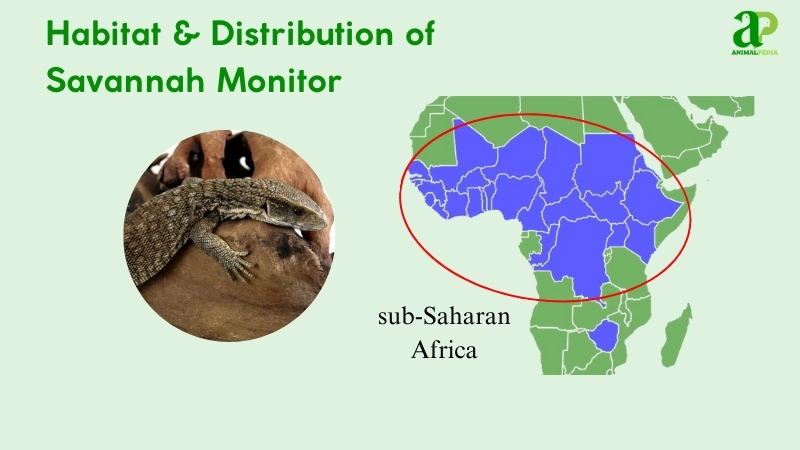
How does the Savannah Monitor Behave?
The Savannah Monitor exhibits a complex suite of behaviors primarily focused on terrestrial predation, movement, and adaptation to daily and seasonal environmental shifts (15). These behaviors ensure its survival and reproductive success within its African savanna habitat.
- Diet and Feeding: Savannah Monitors are carnivorous, feeding predominantly on invertebrates using ambush and foraging strategies, employing their keen sense of smell to locate prey (10, 15).
- Movement and Abilities: They primarily move by walking and digging, possessing specialized physical capabilities such as powerful limbs and a unique respiratory system for sustained activity (4, 15).
- Daily/Seasonal Patterns: These lizards are diurnal, active during the day, and undergo aestivation during the dry season to conserve energy and cope with resource scarcity (15).
To fully appreciate their adaptability, a deeper look into their specific dietary habits and feeding strategies is essential. This reveals how they thrive in a competitive ecosystem.
Diet And Feeding
Savannah Monitors primarily consume invertebrates, classifying them as carnivores and insectivores (15). Their diet consists of 70 to 90 percent invertebrates, including various insects, millipedes, scorpions, and particularly snails, which their specialized jaws efficiently crush (15).
A smaller portion of their diet, approximately 10 to 30 percent, may include secondary foods such as frogs, eggs, and small vertebrates, though the extent of vertebrate consumption remains a subject of scientific debate and may vary regionally (2).
Their hunting behavior involves both ambush predation and active foraging; monitors utilize their blue forked tongues for chemoreception, flicking them to detect chemical cues from hidden prey (15). Once prey is located, their powerful jaws with blunt, peg-like teeth are adept at crushing shells and exoskeletons (15).
A notable adaptation involves the consumption of poisonous millipedes; Savannah Monitors rub their chin on these millipedes for up to 15 minutes, a behavior thought to neutralize toxins before ingestion (16). This intriguing feeding habit prompts questions about their potential venom and defensive capabilities.
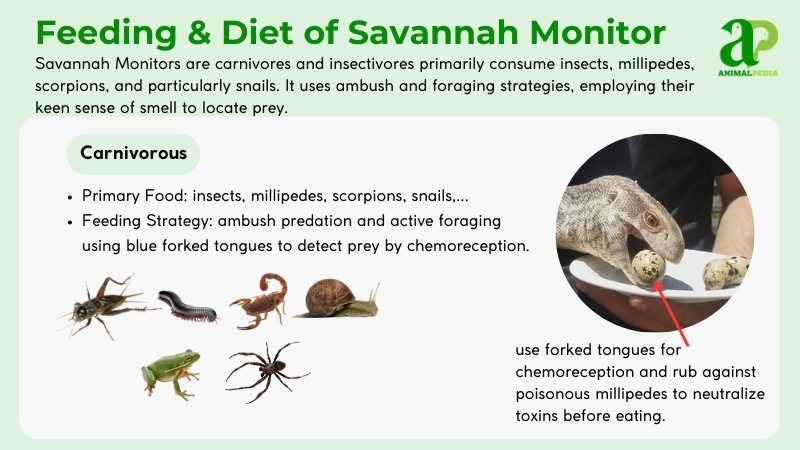
Movement And Abilities
Savannah Monitors move primarily through terrestrial walking and digging, showcasing a specialized locomotive adaptability (15). Their movements consist of three main types:
- Terrestrial Walking and Digging: This is their primary mode, facilitated by four short, powerful limbs equipped with sharp claws, allowing them to traverse their habitat and construct extensive burrows efficiently (15).
- Climbing: They can climb low bushes and other vegetation, utilizing their strong claws and agile bodies to navigate vertical elements within their environment (15).
- Swimming: Savannah Monitors are capable of swimming short distances when necessary, demonstrating an opportunistic aquatic ability for crossing small bodies of water or escaping threats (15).
The Savannah Monitor can run at speeds up to 10-15 miles per hour (16-24 km/h) in short bursts, typically over distances of 50 to 100 feet (15-30 m) (10). Their sustained walking speed is considerably slower, averaging 2 to 3 miles per hour (3-5 km/h) (10). A remarkable special ability includes unidirectional pulmonary airflow, a bird-like respiratory efficiency that supports their high activity levels (4).
They also exhibit the unique trait of storing substantial fat in their tails, which enables them to survive prolonged dry seasons, during which they can lose up to 50 percent of their body weight (16). These physical prowess are deeply connected to their daily routines and seasonal adaptations.
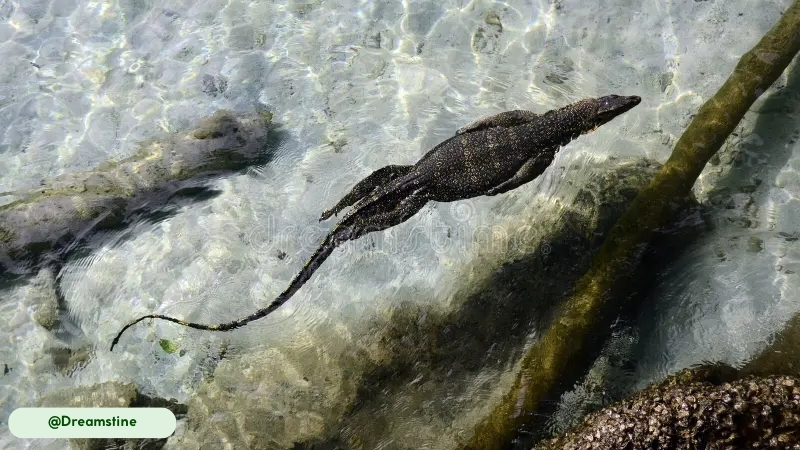
Daily/Seasonal Patterns
Savannah Monitors are primarily diurnal, meaning they are active during the day (15). Their daily activity cycle typically begins and ends with the sun, with periods of basking to regulate body temperature followed by foraging for food.
- Morning (Sunrise to Mid-morning): Emergence from burrows, basking in direct sunlight to raise body temperature for optimal physiological function.
- Mid-morning to Late Afternoon: Active foraging for prey, patrolling territory, and engaging in social interactions.
- Late Afternoon to Sunset: Retreat to burrows or other shelters as temperatures begin to drop, preparing for rest.
These lizards exhibit heightened activity during the wet season, which aligns with increased prey availability and serves as their primary breeding period (15). Conversely, during the dry season, they enter a state of aestivation, reducing their metabolic rate and activity to conserve energy and survive periods of resource scarcity (15).
The species does not engage in long-distance seasonal migrations; their movements are confined to their established territories and immediate habitat in response to local resource availability and climate conditions (15). This predictable rhythm of life directly influences how these fascinating creatures reproduce and perpetuate their species.
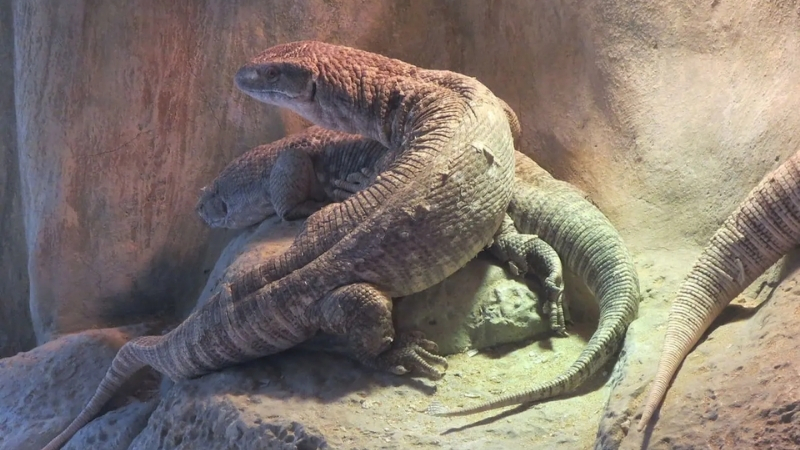
How Does Savannah Monitor Reproduce?
Savannah Monitors reproduce through oviparous means, meaning they lay eggs (16). Their mating season typically coincides with the wet season, when environmental conditions favor successful reproduction and offspring development (16).
During this period, males actively seek out females, initiating courtship through behaviors that include biting the female’s neck and scratching to induce copulation (16). Territorial wrestling among males is also common, a display of dominance to secure mating opportunities (16).
After successful copulation, females bury clutches of 20 to 50 eggs, leaving them to incubate independently (16). The incubation period ranges from 156 to 216 days, with optimal development occurring at temperatures between 80°F and 93°F (27°C and 34°C) (16).
Notably, there is no observed temperature-dependent sex determination in Savannah Monitors, and parental care is absent; the female departs after laying the eggs, and hatchlings are fully independent upon emergence (16). The reproductive success of these monitors is directly tied to their impressive longevity.
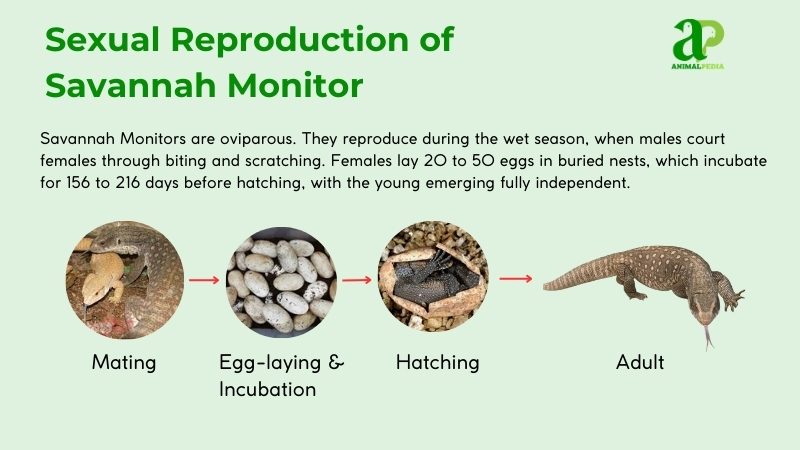
How long does a Savannah Monitor Live?
Savannah Monitors typically live between 8 – 13 years on average in the wild, with some individuals reaching up to 15 years (12). In controlled captive environments with optimal care, their lifespan is significantly extended, averaging 10 to 20 years, and potentially exceeding 20 years (12).
The life cycle of a Savannah Monitor progresses through distinct stages. Hatchlings, from 0 to 2 months, undergo a rapid growth phase. Juveniles, aged 2 months to 2.5 years, continue to mature, reaching adulthood at approximately 2.5 years and beyond, when they become reproductively active (16).
Several factors influence their longevity, including the quality of their diet, which ideally comprises high-protein invertebrates, the stability of their savanna habitat, and the presence of natural predators like snakes and birds (12, 15). Diseases, such as parasitic infections and respiratory issues, also significantly affect their survival rates (12). Their long lifespan contributes to their ecological impact, influencing their interactions with both the environment and humans.
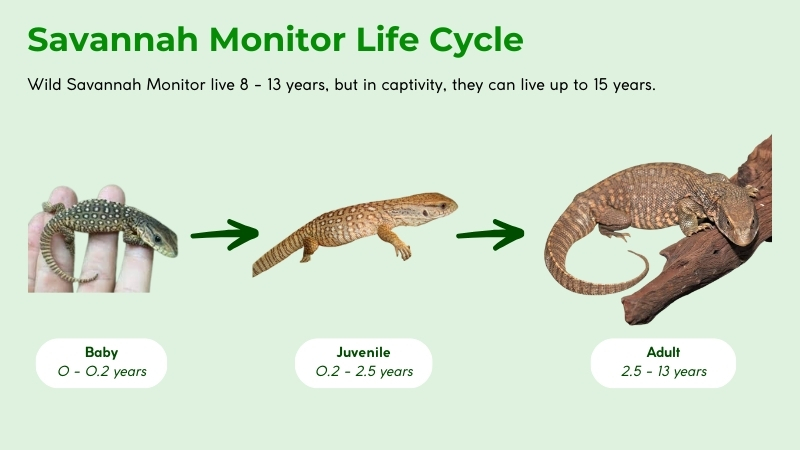
Is the Savannah Monitor Beneficial To Humans?
Savannah Monitors are largely beneficial to humans, primarily by serving as natural pest controllers within their ecosystems (1). These lizards consume significant quantities of insects and snails, which can otherwise damage crops and agricultural yields (1).
Beyond their ecological role, Savannah Monitors hold cultural importance in some African societies; for instance, they are sometimes used in traditional medicine for purported health benefits and are consumed as “monitor stew” in West Africa (11).
Additionally, their presence contributes to ecotourism, offering wildlife viewing opportunities in their native habitats (1). While generally advantageous, they may occasionally raid poultry eggs or act as vectors for parasites like ticks to livestock (11). Their value to human societies prompts an examination of their current conservation status.
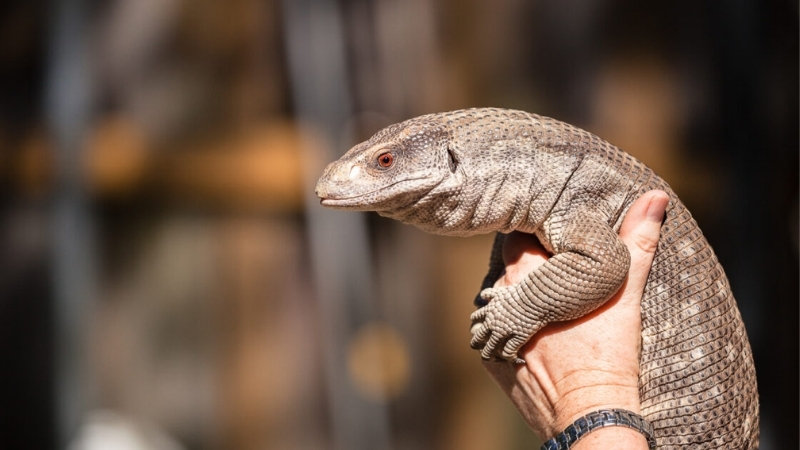
Is the Savannah Monitor Endangered?
The Savannah Monitor is not endangered; its current conservation status is classified as Least Concern by the IUCN Red List, an assessment made in 2021 (8). Despite this, the species faces several significant threats that warrant ongoing monitoring (8). The primary threats include overharvesting for the pet trade, with over 224,000 specimens exported between 2010 and 2017 alone, as well as habitat fragmentation and local hunting (8).
Ecologically, Savannah Monitors are vital as pest controllers, helping to regulate insect and snail populations, which directly benefits agricultural areas (1). They also serve as a prey source for larger predators, indicating a healthy savanna ecosystem (1).
Individual conservation actions can involve supporting organizations that enforce CITES regulations to limit trade, advocating for protected areas in Africa, and choosing captive-bred animals over wild-caught specimens when considering them as pets (14, 1).
Breeding programs in zoos and monitoring efforts by groups like the IUCN SSC Monitor Lizard Specialist Group further contribute to their long-term survival (8). These efforts highlight the importance of preserving such remarkable creatures, leading us to discover even more intriguing facts about them.
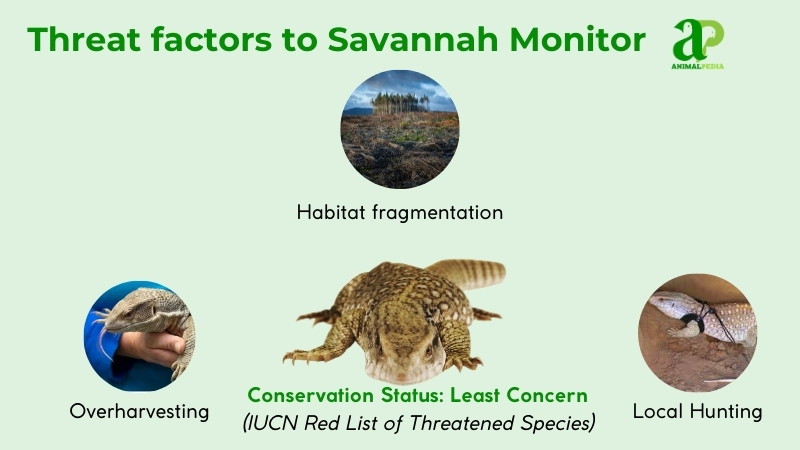
Fascinating Facts About Savannah Monitor
The Savannah Monitor possesses an array of unique attributes and behaviors that distinguish it within the reptilian world. These facts underscore its specialized adaptations and ecological significance.
- Toxin Neutralization Method: Savannah Monitors consume poisonous millipedes by rubbing their chin on them for up to 15 minutes, a unique behavior thought to neutralize toxins before ingestion (15, 16). This strategy allows them to exploit a food source inaccessible to many other predators.
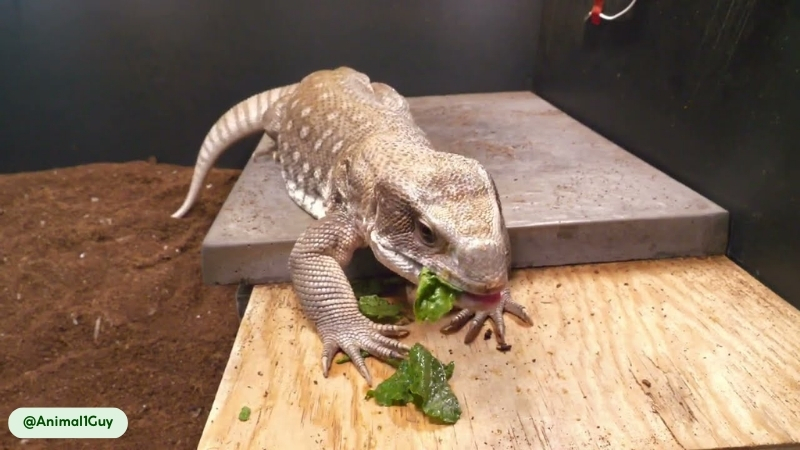
- Avian-Like Respiratory System: Their lungs feature unidirectional pulmonary airflow, an advanced respiratory efficiency commonly observed in birds. This adaptation provides high oxygen uptake, enabling sustained activity levels crucial for a predator in the savanna (4).
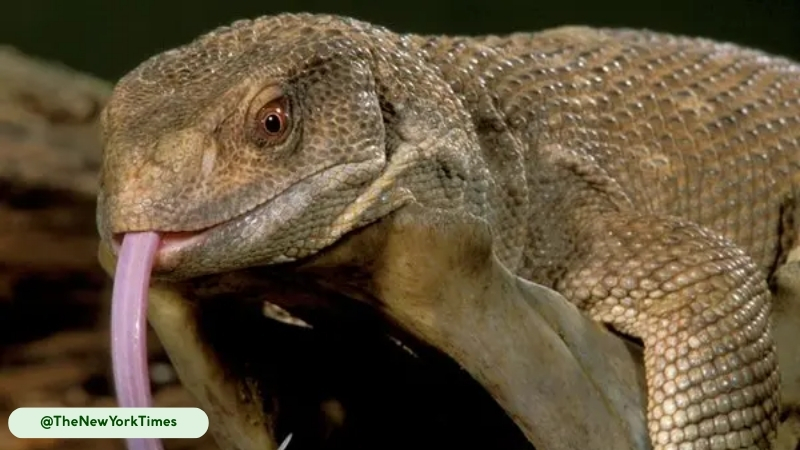
- Juvenile Burrow Preferences: Young Savannah Monitors, typically weighing less than 0.44 pounds (200g), frequently seek refuge in cricket burrows (15, 16). These small, ready-made shelters offer protection from predators until the monitors grow large enough to dig their own substantial burrows.
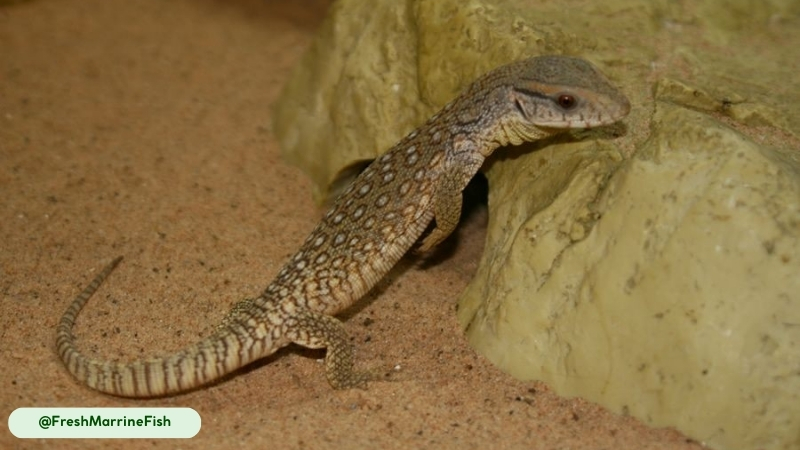
- Continuous Tooth Replacement: The species exhibits a remarkable dental adaptation, replacing its teeth every 109 days. This allows them to transition from sharper, recurved teeth as juveniles, suited for insects, to blunt, peg-like teeth as adults, ideal for crushing the shells of snails and other invertebrates (15, 16).
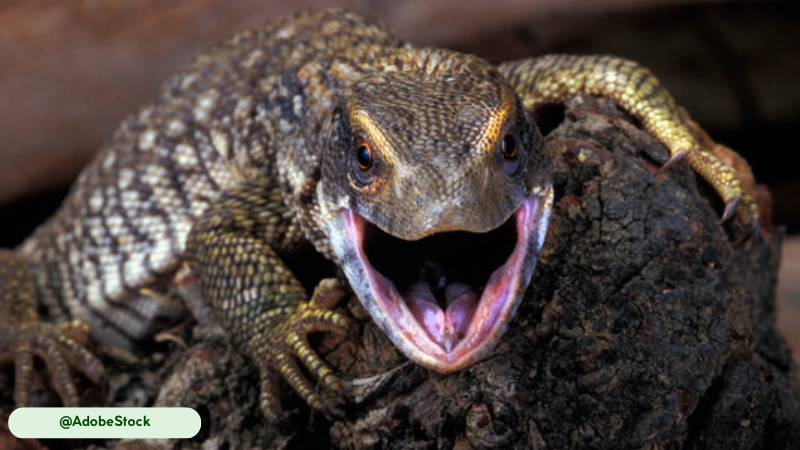
- Urban Adaptation in Invasive Populations: In regions like Florida, invasive Savannah Monitor populations demonstrate significant adaptability. They thrive in urbanized environments such as golf courses and airports, showcasing their capacity to adjust to human-altered landscapes (15, 16).
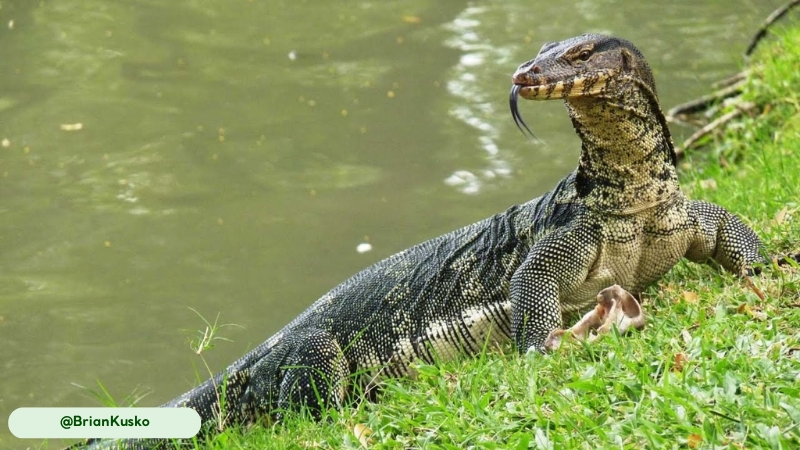
- Tail as a Fat Reservoir: These monitors store a substantial amount of fat in their tails, a vital physiological adaptation that enables them to survive extended dry seasons. During these periods of scarcity, they can lose up to 50 percent of their body weight, relying on these fat reserves (15, 16).
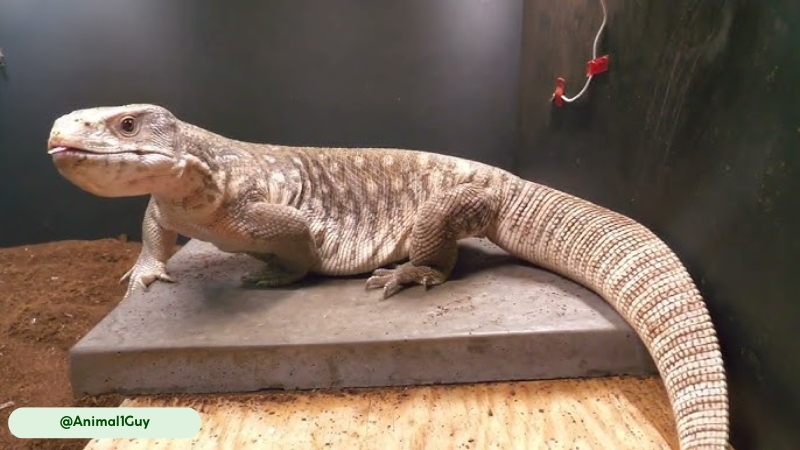
- Rapid Tongue Flicking for Scent Tracking: Following a bite, Savannah Monitors can flick their forked tongues up to 160 times per minute. This rapid chemoreception helps them precisely track escaping prey, even if it manages to move a short distance away (15, 16).
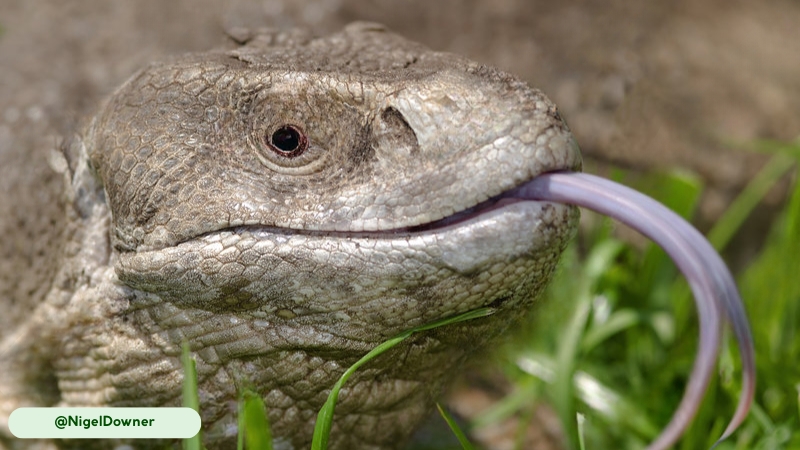
- Delayed Fertilization Capability: Female Savannah Monitors possess the rare ability of amphigonia retardata, or sperm storage, allowing for delayed fertilization (15, 16). This enables them to lay viable eggs even months after mating, optimizing reproductive timing based on environmental conditions.
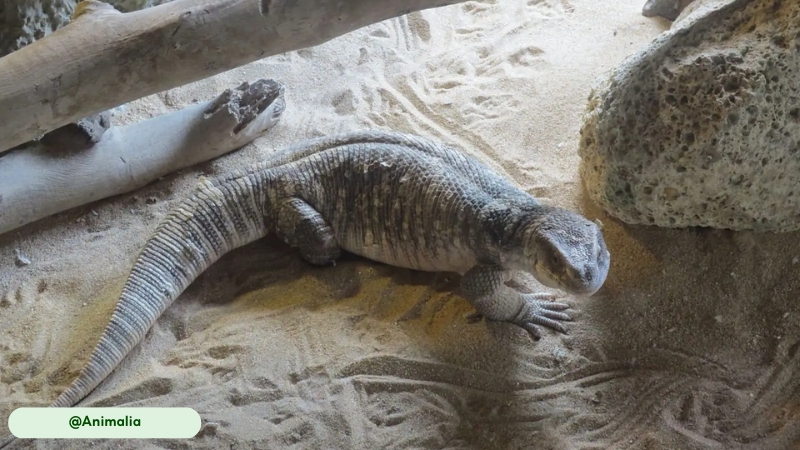
- Unique Cardiac Response: Their heart exhibits a negative force-frequency response, a physiological characteristic uncommon among reptiles (15, 16). This specific cardiac behavior suggests a distinct mechanism for regulating blood flow and pressure during varying levels of activity.
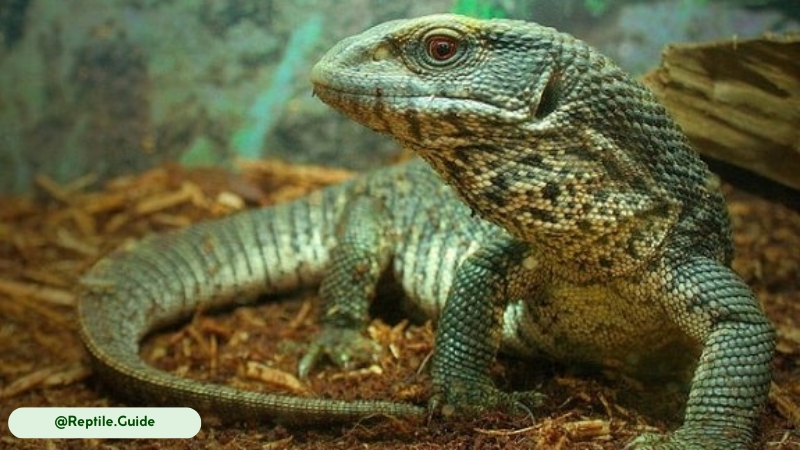
- Hidden Bony Armor Discovery: Recent studies in 2025 on related varanid species have uncovered the presence of osteoderms, bony structures embedded within their skin (13). These provide a hidden layer of internal armor, offering additional protection from impacts and predation.
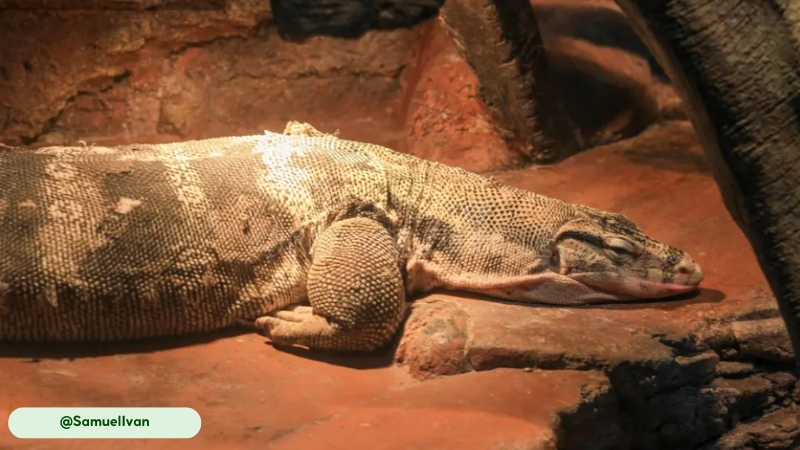
These intriguing aspects of Savannah Monitor biology often lead to further inquiries. We will now address some frequently asked questions, providing concise and accurate information to deepen your understanding.
Frequently Asked Questions About Savannah Monitor
How Fast Do Savannah Monitors Grow?
Savannah Monitors grow rapidly in their initial stages; hatchlings measuring 6-9 inches (15-23 cm) reach 20-30 inches (51-76 cm) within their first year, attaining sexual maturity and adult size around 2 to 3 years of age (16). This fast growth rate requires ample nutrition.
Can Savannah Monitors Eat Vegetables?
No, Savannah Monitors are carnivores, primarily insectivores, and do not typically consume vegetables (15). Their digestive system is adapted for processing protein-rich invertebrates, with their blunt teeth specifically designed for crushing exoskeletons rather than plant matter (15).
Do Savannah Monitors Make Good Pets?
Savannah Monitors can be challenging pets due to their large size, specialized husbandry requirements, and potential for strong bites if provoked (7, 15). They are not recommended for beginner reptile keepers, requiring significant dedication and an appropriately sized enclosure (15).
How Often Do Savannah Monitors Eat?
Juvenile Savannah Monitors typically eat every day or every other day, while adults generally require feeding two to three times per week (15). Feeding frequency should be adjusted based on the monitor’s age, activity level, and environmental conditions to maintain optimal health.
How Long Can A Savannah Monitor Go Without Eating?
Savannah Monitors can endure extended periods without food, particularly during aestivation in dry seasons, when they rely on fat stored in their tails (15, 16). In such states, they may go several weeks to months without consuming food, losing up to 50 percent of their body weight.
Conclusion
The Savannah Monitor (Varanus exanthematicus) stands as a remarkable reptile, perfectly adapted to the dynamic landscapes of the African savanna. From its robust physique and specialized dentition to its unique pulmonary airflow and complex reproductive strategies, every aspect of its biology reflects a testament to evolutionary success. These monitors play a vital role in their ecosystems as pest controllers and serve as fascinating subjects of study and appreciation.
At Animal Pedia, our mission is to illuminate the intricate world of animals through scientifically accurate, visually rich, and engaging content. We strive to provide unparalleled insights into species like the Savannah Monitor, fostering a deeper understanding and appreciation for Earth’s diverse fauna.
We invite you to explore more in-depth analyses, stunning visuals, and comprehensive guides available across our website. Deepen your zoological knowledge by continuing your journey with animal encyclopedia today!





